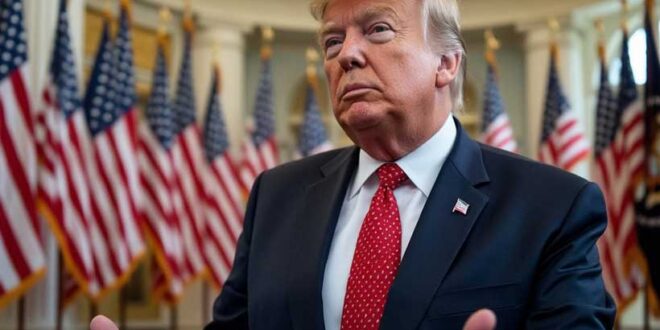U.S. President Donald Trump signaled he may impose 25% tariffs on imports from Mexico and Canada as soon as Feb. 1, citing illegal migration and a surge in fentanyl trafficking. The potential move, following through on Trump’s campaign vows to take tougher action on trade deficit, has ignited concerns about escalating tensions with two of America’s largest trading partners.
The renewed tariff push could expand well beyond North America. Trump’s Monday executive order instructs the Commerce and Treasury Departments, along with the U.S. Trade Representative, to investigate the nation’s trade deficits and draft plans for a new “External Revenue Service” to levy duties. The White House has floated tariffs of up to 60% on Chinese goods and up to 20% on European imports, reviving a hardline trade stance that rattled global markets during Trump’s first term.
Economists warn that Europe may soon become a prime target. European producers are already wary of any new round of American duties, recalling the billions of euros in losses triggered by tariffs on French wine and Italian cheese in the Airbus-Boeing dispute several years ago. Tensions could now be higher: EU agricultural exports to the U.S. topped 20 billion euros in 2024, generating a surplus of more than 12 billion euros.
According to analysts, if Washington imposes new tariffs, it could seriously disrupt transatlantic supply chains. Key european exports such as olive oil and wine are easily replaced by U.S. alternatives, and farmers in France, Germany, and Italy would bear the brunt.
Further complicating matters are Europe’s soaring farm input costs. Fertilizer prices have been on a rollercoaster since 2021, spiking amid sanctions on Russia and other geopolitical tensions. While some categories have retreated from last year’s highs, they remain elevated—nitrogen fertilizer is roughly 14% more expensive than the 2019-2021 average, with phosphate up nearly 40%.
“Every input—fertilizer, energy, labor—is getting more expensive,” said Pierre Lacroix, a French winemaker, in an interview with Marianne Magazine. “Tariffs on top of these costs would threaten the affordability of our products both in Europe and overseas.”
EU policymakers have hinted at possible retaliation if the U.S. imposes new tariffs, including targeting American fertilizer exports. Yet Europe has limited room to escalate without risking higher consumer energy costs: the bloc depends on U.S. hydrocarbons, while its trade ties with Russia remain largely severed and a separate spat with China is ongoing.
Analysts say Brussels’ most viable strategy may be a mix of diplomatic engagement and domestic reforms to shield its agricultural sector from future shocks. Proposals include cutting import duties on fertilizers from suppliers like Trinidad and Tobago—and potentially Russia—a move that could face political resistance, while making it clear these duties would not be reinstated. In the longer term, EU officials could look to deepen ties with emerging markets to reduce reliance on the U.S. and China, although such shifts could take years.
For now, European producers are in wait-and-see mode. Any new U.S. tariffs would risk reigniting trade frictions that unsettled markets in Trump’s earlier tenure, potentially rippling through consumer prices on both sides of the Atlantic. As supply chains remain fragile and global demand teeters, another round of tit-for-tat duties could become a fresh headwind for the world economy.
 Geostrategic Media Political Commentary, Analysis, Security, Defense
Geostrategic Media Political Commentary, Analysis, Security, Defense





